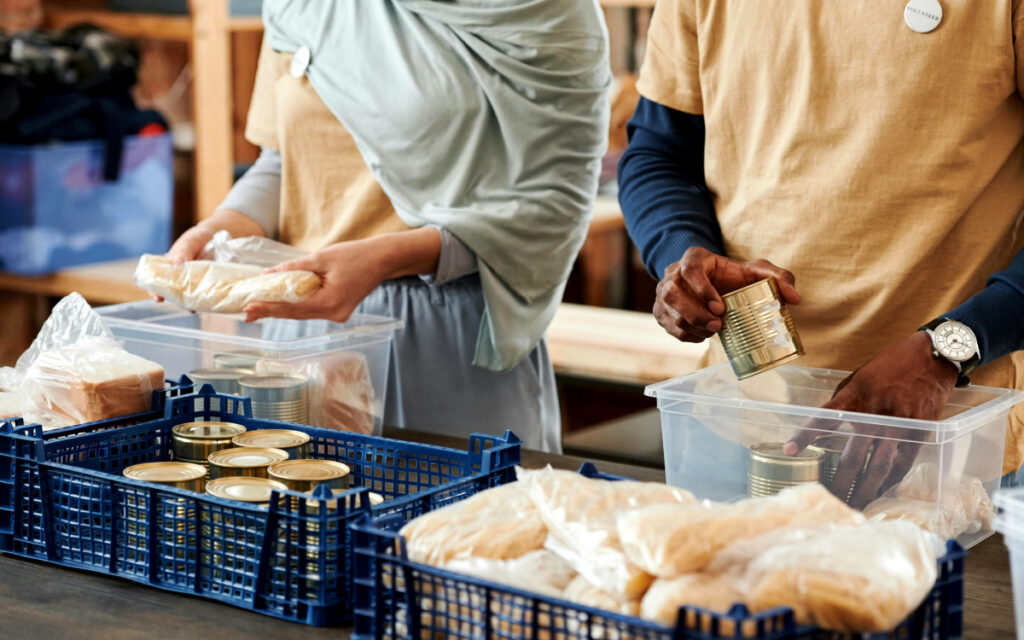
New Brock University policy brief reveals several municipalities experienced an over-50 per cent increase in food bank usage between 2022 and 2023. Photo credit: Pexels/Julia M Cameron
In a trend that “does not show any signs of slowing down,” Niagara’s food banks are being stretched thin.
According to a new policy brief from Brock University’s Niagara Community Observatory, the number of people in the region utilizing local food banks and food programs has seen a dramatic rise over the last few years, with many areas seeing an over-50 per cent increase in usage between 2022 and 2023.
“As charitable organizations, food banks were designed to provide temporary assistance to those in need,” said Brock political science professor and study author Joanne Heritz. “Today, they are responding to systemic inadequacies by supporting an alarming number of vulnerable residents with food security.”
Per data presented in the brief, from 2022 (or 2021, depending on area) to 2023, food bank usage rose 82 per cent in St. Catharines and Thorold, 65 per cent in Niagara Falls, 60 per cent in Port Colborne and Wainfleet, 56 per cent in Pelham, 50 per cent in Grimsby, and 48 per cent in Welland.
In Fort Erie, West Lincoln, and Lincoln, usage rose by 35, 22, and 20 per cent, respectively.
Niagara-on-the-Lake actually saw the highest increase of all local municipalities, with usage growing by 118 per cent between 2021 and 2023. However, despite the comparative rise, the actual number of individuals who accessed food banks in the north Niagara community was very low.
Overall, the brief revealed that one in 10 residents in St. Catharines, Thorold, and Welland, and one in eight residents in Niagara Falls, Port Colborne and Wainfleet, visited a food bank in 2023.
It also found that more than 40 per cent of those who used Feed Niagara-based food banks were children.
Information for the brief was gathered during the summer and fall of 2023. Heritz conducted interviews with 24 representatives of food acquisition and distribution organizations in all of Niagara’s 12 municipalities.
She also interviewed organizations serving vulnerable groups such as children, asylum seekers, and students.
Unaffordable housing, precarious employment, inadequate social assistance, and ultimately inflation were put forth as the primary reasons for the significant uptick.
“Residents of Niagara are not earning enough, or not receiving enough, to cover the increasing cost of their rent, which is usually prioritized before their nutritional needs,” said Heritz.
Though the brief does not explicitly frame them as reasons for the uptick, per se, it also mentions asylum seekers and newcomers as having a “dependence” on local food banks.
“Just short of 3,000 asylum seekers were transferred to Niagara between June 2022 and March 2023 by Immigration Refugees and Immigration Canada,” reads the study. “As a world tourist destination, Niagara Falls has more than 16,000 hotel rooms that provide a quick fix to accommodating asylum seekers. Though the federal government now makes provision for their food security while staying in hotels, their dependence on food banks indicates a shortfall in services.”
Recent figures from the federal government revealed that Canadians spent more than $115 million over the last year to help house and feed asylum seekers in Niagara Falls.
The Brock brief also mentions post-secondary students, particularly international students, as another subgroup facing “several issues related to food security”.
Although the brief only talks about how Niagara’s post-secondary institutes are helping to alleviate some of the pressures these students face with on-campus programs and does not expressly indicate how or if they are affecting community food banks around the region, several recent reports from elsewhere in Ontario seem to indicate at least some international students are frequenting local food banks.
One food bank in Brampton reportedly even had to close its doors to international students amid an unsustainable surge in usage.
The policy brief, entitled “Sustaining Food Security in Niagara”, concludes by offering a number of recommendations at the federal, provincial, and local level to address food insecurity.
Some recommendations include: a basic income for low-income households, expediting processing claims for federal supports for asylum seekers, raising the minimum wage and disability benefits and social assistance rates to align with a living wage, and increasing the supply of community housing in Niagara.
Read the full policy brief here.




















